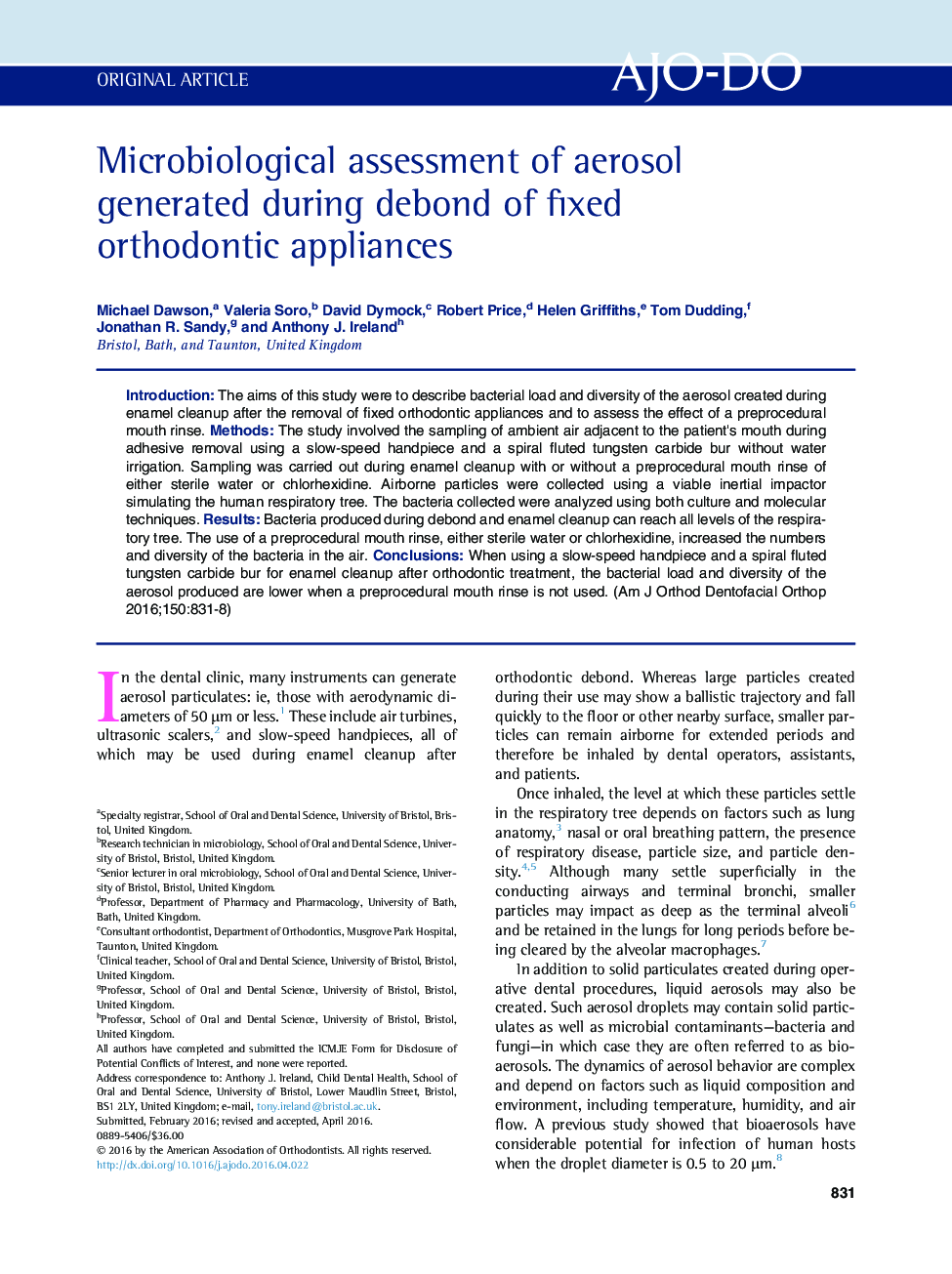| Article ID | Journal | Published Year | Pages | File Type |
|---|---|---|---|---|
| 5637764 | American Journal of Orthodontics and Dentofacial Orthopedics | 2016 | 8 Pages |
â¢Slow-speed enamel cleanup creates a bioaerosol that infiltrates deep into the lungs.â¢A water or chlorhexidine rinse increases the numbers and diversity of airborne bacteria.â¢Bacteria were still found in the air at each impactor stage, even without enamel cleanup.
IntroductionThe aims of this study were to describe bacterial load and diversity of the aerosol created during enamel cleanup after the removal of fixed orthodontic appliances and to assess the effect of a preprocedural mouth rinse.MethodsThe study involved the sampling of ambient air adjacent to the patient's mouth during adhesive removal using a slow-speed handpiece and a spiral fluted tungsten carbide bur without water irrigation. Sampling was carried out during enamel cleanup with or without a preprocedural mouth rinse of either sterile water or chlorhexidine. Airborne particles were collected using a viable inertial impactor simulating the human respiratory tree. The bacteria collected were analyzed using both culture and molecular techniques.ResultsBacteria produced during debond and enamel cleanup can reach all levels of the respiratory tree. The use of a preprocedural mouth rinse, either sterile water or chlorhexidine, increased the numbers and diversity of the bacteria in the air.ConclusionsWhen using a slow-speed handpiece and a spiral fluted tungsten carbide bur for enamel cleanup after orthodontic treatment, the bacterial load and diversity of the aerosol produced are lower when a preprocedural mouth rinse is not used.
